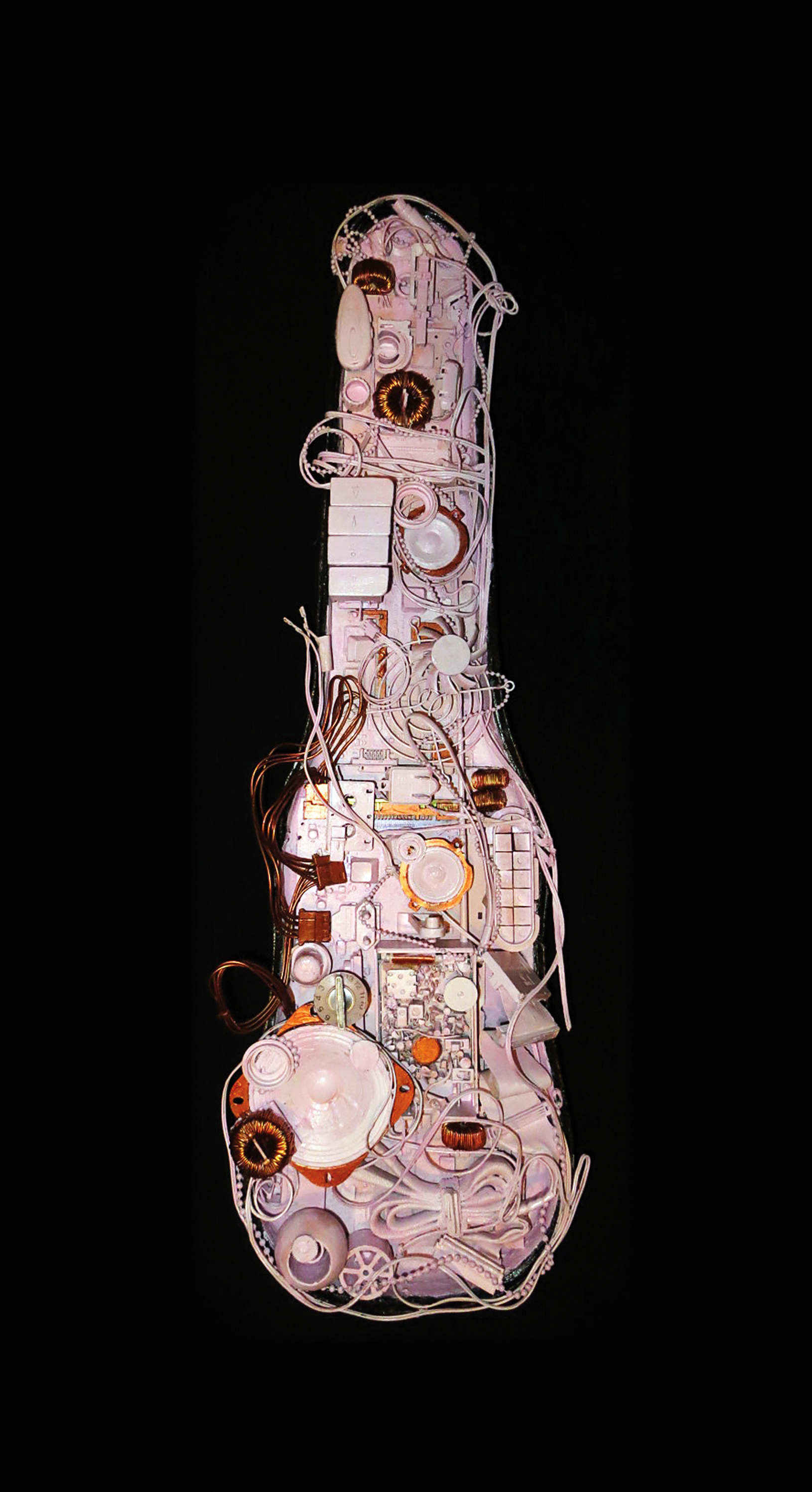Yes, the Electron Fuzz Custom Studio will melt your face off. No, it is not just an average fuzz box. Yes, it is badass. No, I don’t want to give this one back. I was introduced to Retro Mechanical Labs via the world of Eurorack, and, to be honest, the eye candy of their boxes made me swoon. Based out of Portland, OR, Johnathan Irish and Jared Scott hand-build Retro Mechanical Labs’ beautiful distortion modules in pedal, Eurorack, and now studio formats in both repurposed vintage equipment and wooden cases with vintage or new meters. To my disbelief, there aren’t many people using this in a studio setting yet – here is where the Electron Fuzz Custom Studio enters.
The Electron Fuzz Custom Studio is a dual-mono silicon, high distortion fuzz in a shallow three rack space unit. It features balanced XLR ins and outs on the back, and two linkable Hi-Z instrument jacks on the front. All controls are repeated on each side. The appropriately named Hurt and Pain tone controls have a direct impact on the gain staging, so adjustments change the dynamics of the distortion circuit, not just a static filtering of frequencies. Furthermore, Hurt impacts the low end while Pain affects the high end frequencies. The Input attenuator also feeds the dynamics of the device, so between the Hurt, the Pain, and the Input attenuator, the breadth of sound offers a wide-ranging palette. The self-oscillating feedback reacts to the source material not only in dynamics but pitch as well, which can create movement in the sound. The Cut switch enables a high-pass filter. The Bleed knobs balance the parallel clean circuit with the distorted sound. This knob was critical in getting the desired coloration by setting the distortion 100% wet and then backing the distortion way down. The Bias switch changes the device’s reaction to longer decays, so think guitars, keyboards, etc. This also smooths the timbre of the fuzz. An X1000 switch sounds like it does just that, engages additional gain staging that explodes the fuzz to a new dimension. Lastly, the meters depict how hard you are driving the second transistor, which is useful but is not going to help you set levels.
After decimating everything I could get my hands on, which is too much fun, I started running it through some real-world scenarios. One of the idiosyncrasies is that Hurt, Pain, Feedback Osc, and Distortion knobs work in reverse. Meaning, you turn this device down instead of up, and it rings very true as the Electron Fuzz Custom Studio has a ridiculous amount of gain on tap. Acoustic and electronic drums both received wildly different settings to achieve the desired results. Roland 808-esque type drums went into full-bore fuzz, bringing fundamental sub-octave notes into the spotlight, and highlighting reverb tails into new sounds altogether. The acoustic drum bus received a much more light-handed approach to bring punch, attack, and control over the dynamics. Setting the preferred amount of distortion, and then bringing the parallel clean signal in, brought the acoustic drums to life. I ran electric bass direct into the front panel by engaging the Hi-Z switch, while also on a mic’d cabinet. The direct signal gave me the sound you would expect from a silicon fuzz stompbox, but with way more options. Beefing up the mic’d signal allowed for two very different tonal varieties while easily manipulating the relationship between the two. On electric guitar, I discovered a wonderfully gnarly solo sound by engaging the Bias switch, flipping the X1000 switch, and messing with the feedback. This unit is dual mono, which offers an advantage as it gives you absolute control over the stereo image. If you’d like to use it for more traditional bus duties, just set the left and right channels the same. The Electron Fuzz Custom Studio was a lot of fun on gang backups and effect vocals. Also, I absolutely abused synths with this thing and was rewarded with practically limitless tone options. Even running the left and right channels in series with no input while playing the feedback circuit pitches into a dystopian drone landscape.
The Retro Mechanical Labs Electron Fuzz Custom Studio absolutely slays as a fuzz effect and tone-shaping tool. While there is nothing subtle about the Electron Fuzz Custom Studio, it can be used to inject life into traditional sources with a gentle hand. The fuzz sound can range from annihilated to just adding a bit of character, while at the same time really affecting the dynamics of the source. It has enough gain to feed instruments straight into your converters/DAW and can be used creatively to conjure different sonic landscapes. Take a look at their entire line of sound destroyers – I promise you’ll want at least two of them!




_disp_horizontal_bw.jpg)